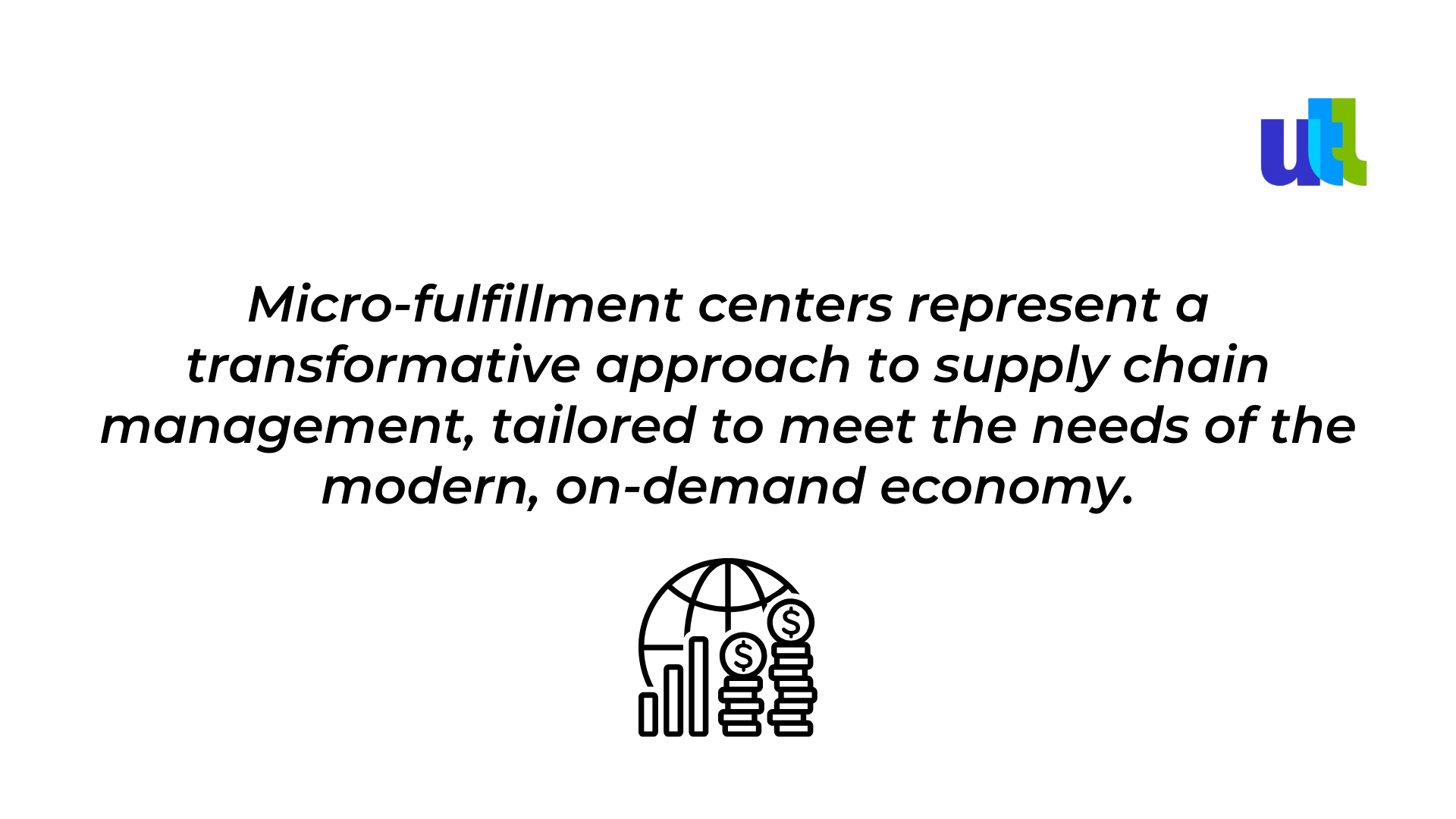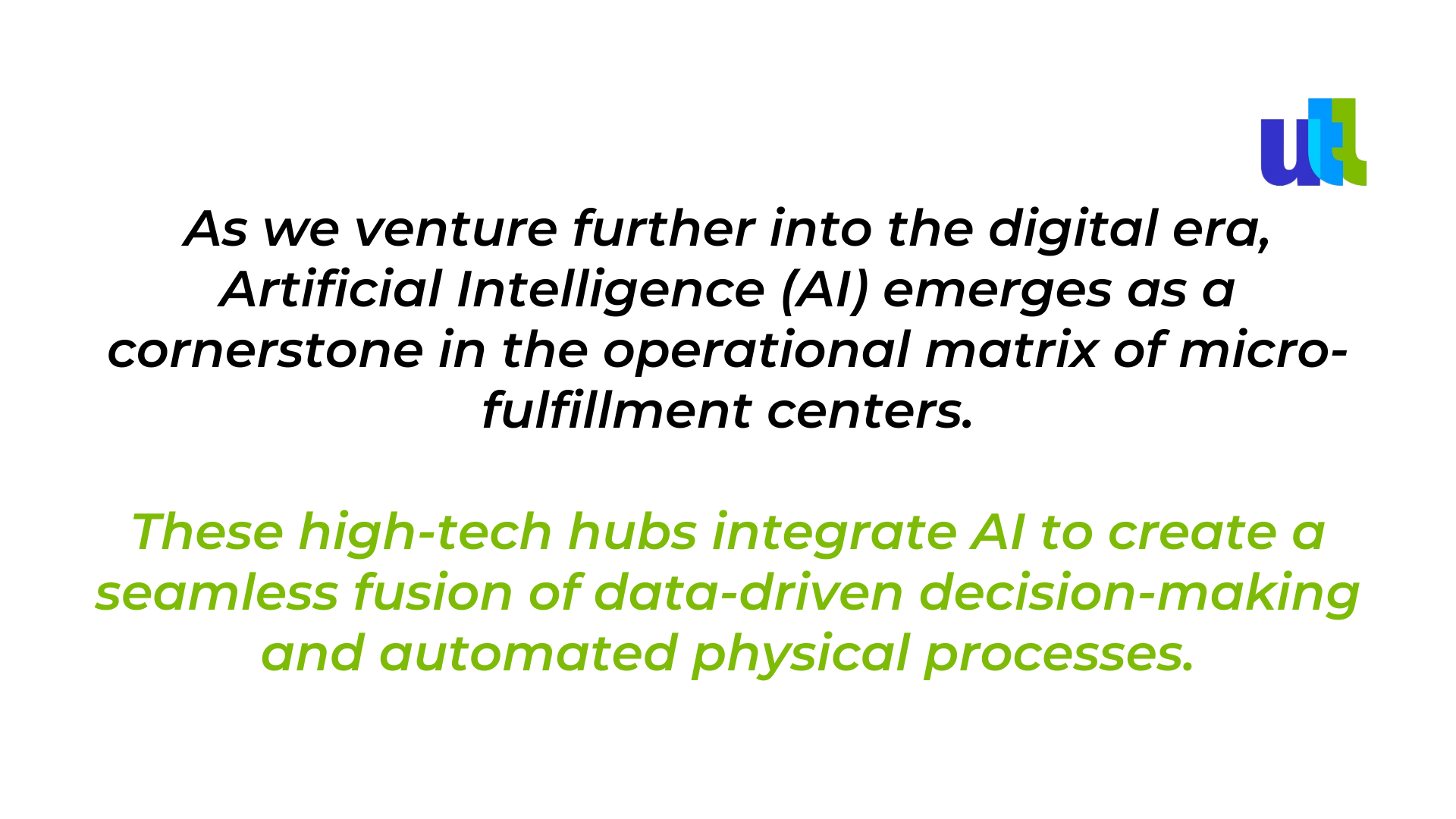In today’s fast-paced world, the logistics and supply chain industry is under constant pressure to deliver products faster, more efficiently, and with the flexibility that modern consumers demand. This is where micro-fulfillment centers come into the picture, emerging as a game-changing solution in urban logistics. These compact, highly automated distribution hubs are strategically located near consumers to facilitate rapid delivery services—often within hours. The growth of e-commerce and the expectation of same-day delivery have made these centers not just advantageous, but essential. And at the heart of their operation lies Artificial Intelligence (AI), the powerhouse driving these centers to unprecedented levels of efficiency. From automating sorting systems to optimizing delivery routes, AI is not just streamlining operations—it's reinventing them. As we delve into the intricacies of these advanced systems, we’ll explore how AI-infused micro-fulfillment is poised to redefine what it means to deliver not just on time, but just in time.
Understanding micro-fulfillment centers

Functioning as highly efficient, small-scale warehouses, these centers are strategically placed close to consumer hotspots to enable rapid and cost-effective delivery services. Their purpose is straightforward yet ambitious: to compress the time and space between product and purchaser. By deploying sophisticated automation and robotics within these centers, businesses can address some of the most pressing challenges in logistics today. This includes the notorious last-mile delivery bottleneck, where traditional distribution models often stumble, leading to delays and increased costs. Furthermore, micro-fulfillment centers are a direct response to the escalating consumer expectation for faster, if not immediate, delivery of goods—satisfying the desire for speed without sacrificing accuracy or increasing the price. As we delve into the inner workings of these agile distribution nodes, we'll explore how they're revolutionizing the journey products take from warehouse to doorstep.
The advent of AI in micro-fulfillment

Machine learning algorithms are employed to analyze consumer behavior and sales data, enhancing the accuracy of demand forecasting and inventory management. Robotics, guided by AI, work tirelessly to sort, pack, and dispatch goods, maximizing throughput and efficiency while minimizing human error. Predictive analytics harness past and present data to anticipate future trends, allowing for proactive adjustments to inventory and supply chain strategies. Together, these AI-powered tools and technologies are not just optimizing the micro-fulfillment process; they are creating a dynamic ecosystem that adapts in real-time to the shifting landscapes of supply and demand, setting a new benchmark for responsiveness and agility in the supply chain sector.
AI-driven automation in sorting and packaging
In the heart of micro-fulfillment centers, AI-driven automation is redefining the norms of sorting and packaging operations. Through the adoption of intelligent systems, these centers can now automate the complex task of sorting a diverse array of products with precision and at speeds that far surpass human capabilities. AI algorithms continuously learn and improve, ensuring that the sorting processes become more efficient over time, significantly reducing errors that can lead to customer dissatisfaction and logistical headaches. When it comes to packaging, AI is just as revolutionary, enabling dynamic selection of packaging materials and configurations based on the product's size, fragility, and destination, thereby optimizing the use of resources and reducing waste. This smart approach to packaging not only ensures the safety of items during transit but also caters to the growing consumer demand for sustainable practices. Efficient material handling, orchestrated by AI, allows for a smoother flow of goods through the supply chain, demonstrating that intelligent automation is not a mere addition but a fundamental shift towards a more agile and sustainable future in product distribution.
Reducing delivery times with AI optimization
The strategic deployment of AI in micro-fulfillment centers is revolutionizing the once-daunting last-mile delivery challenge. By leveraging AI for route optimization, these centers are ensuring that delivery paths are not just shorter, but smarter. Advanced algorithms analyze traffic patterns, delivery windows, and geographical data to arrange the most efficient delivery schedules, thus significantly reducing delivery times. This AI-driven optimization leads to more deliveries per hour and a substantial reduction in fuel consumption, contributing to both economic and environmental savings. Real-world applications abound, with companies like Ocado and Amazon demonstrating how AI-infused micro-fulfillment strategies can result in customer orders being processed and delivered in a fraction of the time traditionally expected. For instance, Ocado's use of AI and robotics has enabled them to process large orders within minutes, with goods being delivered within a tight time frame, setting a new industry standard for speed and efficiency in delivery services.
Challenges and considerations
While the integration of AI into micro-fulfillment centers heralds a new dawn for supply chain logistics, it is not without its hurdles.

Moreover, there's the critical task of ensuring that the workforce can adapt to and work alongside these advanced systems, requiring substantial training and a shift in the labor landscape. There is a delicate balance to be struck between automation and human labor, where the efficiency gains from AI must be weighed against potential job displacement and the need for human oversight in increasingly automated processes.
The future of micro-fulfillment
Looking ahead, the trajectory of AI in micro-fulfillment is set for even more groundbreaking developments. We can anticipate the evolution of AI systems that are not only self-learning and adaptive but also capable of predictive decision-making, further reducing the time from warehouse to doorstep. The continuous improvement in AI's cognitive capabilities promises to refine supply chain logistics to near perfection, offering a personalized customer experience, and even more resilient operations. As these technologies mature, we can expect a supply chain that is not only faster and more efficient but also smarter and more attuned to the complex dynamics of global commerce. The future of micro-fulfillment, driven by relentless AI innovation, holds the potential to redefine the marketplace in ways we are just beginning to imagine.
Conclusion
The landscape of logistics and supply chain management is undergoing a profound transformation, driven by the integration of AI into micro-fulfillment centers. These centers are not just a response to the demand for speedier deliveries; they represent the forefront of a logistics revolution, offering unprecedented efficiency and precision in the distribution of goods. The importance of adopting such AI-driven systems cannot be overstated; they are essential for businesses that aspire to remain competitive and fulfill the rapidly evolving expectations of consumers. By leveraging the power of AI, companies can ensure they are not just keeping pace with industry advancements but are actively shaping the future of commerce.
For free consultation on AI-driven micro-fulfillment, click here.
----------------------------------------------------------------------------------------------
View the full presentation:
WRITTEN BY
Milda Butkeviciute
2024-01-10


































































































































































































